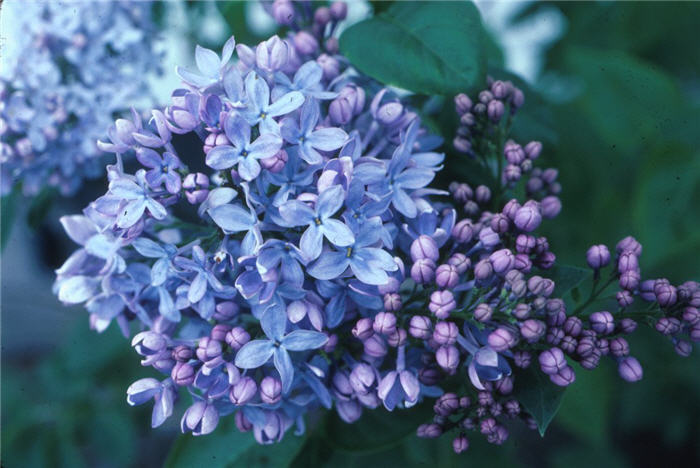| Botanical Name: Syringa vulgaris 'President Lincoln' | |
| Common Name: President Lincoln Lilac |

-
Anatomy
-
Culture
-
Design
Plant Type
Shrub
Height Range
6-12'
Flower Color
Blue
Flower Season
Spring
Leaf Color
Dark Green
Bark Color
Brown, Grey
Fruit Color
n/a
Fruit Season
n/a
Sun
Full, Half
Water
Medium, Extra in Summer
Growth Rate
Moderate
Soil Type
Sandy, Clay, Loam, Rocky
Soil Condition
Average, Rich, Poor, Well-drained
Soil pH
Neutral, Basic
Adverse Factors
n/a
Design Styles
English Cottage, Formal, Mediterranean, Ranch, Spanish
Accenting Features
Fragrance, Showy Flowers
Seasonal Interest
Spring
Location Uses
Background, Shrub Border, Foundation, Walls / Fences
Special Uses
Cut Flowers, Hedge, Screen
Attracts Wildlife
Butterflies
Information by: Stephanie Duer
Photographer:
Photographer:
-
Description
-
Notes
'President Lincoln' has upright panicles of violet buds that open to Wedgewood blue, fragrant flowers. Use as a hedge or screen, or in a shrub or foundation border.
Grow in well drained soil in full sun. Tolerates a range of soil types, but best growth occurs in sandy-loam or clay-loam soils. Lilacs sometimes don't bloom, and it is usually because it was pruned too early or too late in the season, or it's getting too much nitrogen fertilizer. Lilacs bloom on old wood, so prune immediately after bloom, as buds for the following year begin to set practically as the flowers fade. For tips on pruning, see Guides.